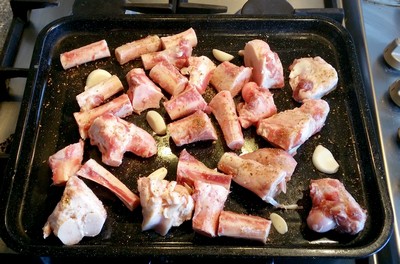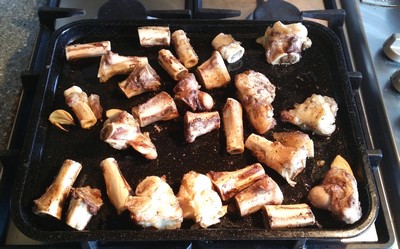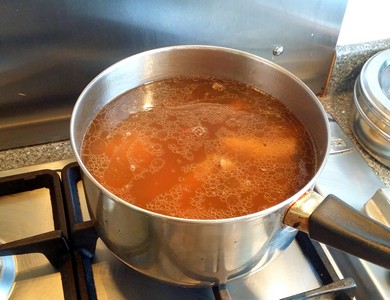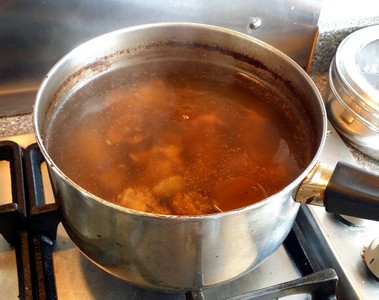
If you don’t have time to make bone broth the traditional way then try this quicker method for making bone broth.
We know from traditional diets that broths made from long slow cooked bones were consumed. These broths were rich in minerals extracted from the bones and gelatin which is a natural component for building collagen within the body. Collagen is a structural protein found within the body which helps to form bone, tendons, ligaments, cartilage, muscle, teeth, hair, skin and nails As many modern diets are low in both minerals and gelatin I believe that there is a significant place for bone broths within the modern diet.
I have modified the continuous bone broth recipe to make it easier for individuals with busy lifestyles to make. This broth has a shorter cooking time and will not be as rich in gelatin or minerals as broths made with a longer cooking process but still contains valuble nutrients.
Continuous Bone Broth Recipe
1 kg bones
1 tsp of ground spices (coriander, cumin etc)
5-6 cloves of garlic
2 tbsp of apple cider vinegar or lemon juice
Any left over vegetables (celery, peelings etc)
Method
First Extraction
- Lay the bones out evenly on an oven tray and sprinkle over some aromatic spices.
I used a little ground coriander and cumin.
These spices help to take some of the smell away from the bones
- Add 4-5 cloves of garlic to the bones and roast in the oven at around 180C for 15-20 minutes. This helps to develop flavour

- Place roasted bones in a suitable pan for making the broth and add vinegar or lemon juice
- Boil enough water in a kettle to fully cover the bones

- Bring to the boil then turn down heat to the lowest setting and simmer for around 3-4 hours. Alternatively simmer in a slow cooker (stock pot)

- After cooking for 3-4 hours strain off the broth and leave it to cool. Store the cooled broth in the fridge or freezer. A layer of fat will develop on the top which you may remove before using. If storing broth in the fridge keep the fat layer which acts as a seal and will help the broth to last longer.
The first extraction of broth is rich tasting and ideal for soups, stews or drinking. When cool the broth should gel indicating that it contains gelatin.
The broth making process does not stop here. Save the bones but remove any vegetable matter for making subsequent batches of bone broth.
2nd and Subsequent Extractions
- The next day return the bones to the cooking pan and add 2 tbsp of vinegar or lemon juice.
- Add enough boiling water to cover the bones
- Add any additional vegetables, herbs and/or spices of your choice and bring to the boil
- Turn down the heat and simmer for 3-4 hours.
- After cooking for 3-4 hours strain off the broth and leave it to cool. Store the cooled broth in the fridge or freezer. A smaller layer of fat will develop on the top which you may remove before using. If storing broth in the fridge keep the fat layer which acts as a seal and will help the broth to last longer.
Repeat this process for extracting broth each day until the initial bones are soft. How many batches of broth you get depends on the bones you have used and length of cooking time. I have found that this method is suitable for producing daily broth for a week from the same initial batch of bones.
Subsequent broth extractions are less flavourful but will be still mineral-rich. Consider using these later broth batches to cook grains and legumes.
Related Articles
- See my blog recipe turkey bone broth
- Recipe for Continuous Bone Broth
- General Recipe for broths
